We explain what the classical era was and the periods into which it is divided. Also, what are its general characteristics and how was its end.
What is the classical era?
In general, when we refer to the Classical Period or Classical Antiquity, we are talking about a period of history located between High Antiquity (when the first civilizations of the Ancient Near East appeared) and Low Antiquity (the transition to the Middle Ages ).
This period corresponds to the flourishing of the Greco-Roman civilization , located on the Mediterranean count and the coasts of the Near East. It includes the time when the Greek civilization reached its maximum artistic, philosophical, architectural and economic splendor, but also that of its fall.
It also includes the conquest by the Latins , who assimilated their cultural wealth and thus gave birth to the Roman Empire , a political and military force that conquered practically all of Europe , North Africa and the Middle East. In its womb, Christianity was also born .
Location of the classical period in time
The classical period begins in the 5th century BC. C. , with the end of the war between the city-states of Ancient Greece and the Persian Empire . The Greek armies were victorious against the Persian invader. Thus was founded a new feeling of greatness and cultural trust among its inhabitants.
Depending on the sources consulted, this beginning can be considered even earlier, in the 8th century BC. C. , with the mythical foundation of Rome in the year 753 a. C.
Similarly, the classical age culminates in the 5th century AD. C. , With the Christianization of the Western Roman Empire , its fall and dismemberment in front of the barbarian tribes of northern and eastern Europe. From then on, the Middle Ages began.
Classical Greece (from 510 to 330 BC)
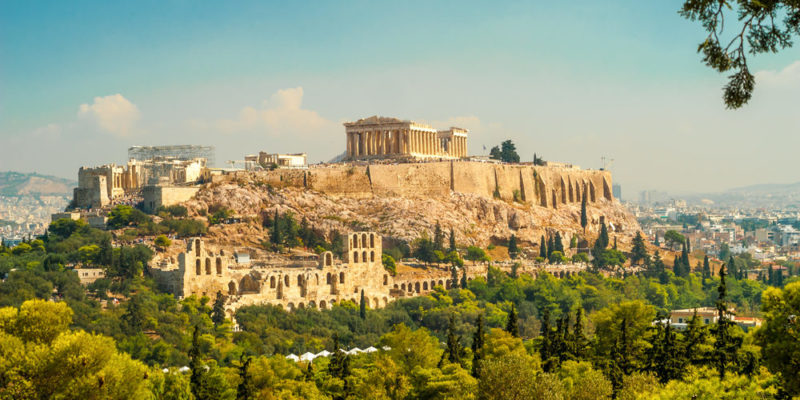
This is the period of greatest splendor of ancient Greek culture . It begins with the fall of tyranny in Athens, a city that later became the most important of all the city-states that made up Greek civilization.
This is how Athenian democracy was born , the oldest example of a direct democracy between citizens (men, Greeks and adults, of course). With it, the foundations were laid for the golden age known as the Age of Pericles (444-404 BC).
However, problems arose when Athens became involved in the territorial conflicts between Corcyra and Corinth. As the latter was an ally of Sparta, the bloody 27-year Peloponnesian War (431-404 BC) broke out .
In that conflict the two Greek military leagues faced each other : that of Delos, led by Athens, and that of the Peloponnese, led by Sparta.
The Hellenistic period (330-146 BC)
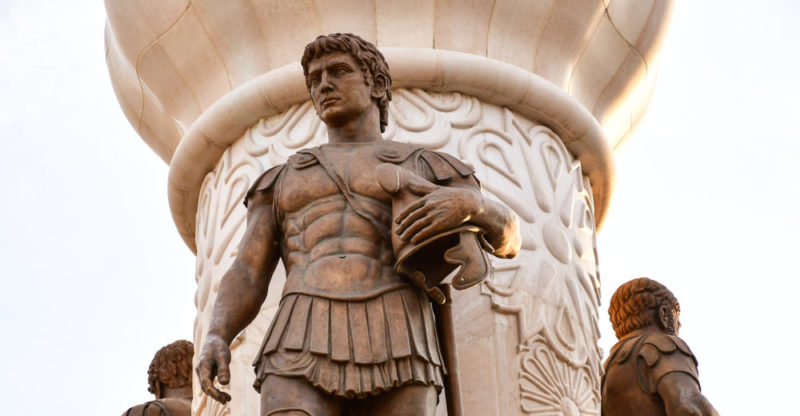
The Macedonian kingdom was under the command of Philip II and then his son, the famous Alexander the Great . He began his conquest of the Greek cities in 346 BC. C., giving rise to the Macedonian Empire that extended over the domains of Greece , Egypt, India , Persia and Central Asia.
In this period , the koine was imposed as the lingua franca in all territories . It was a kind of Greek language that allowed a cultural expansion that resulted in enormous advances in philosophy (especially from the followers of the classics Plato and Aristotle ) and in science and technology.
Due to the great development of the empire under Alexander the Great, this time is also known as the Alexandrian Period . Cities such as Alexandria, Pergamum, and Antioch enjoyed the importance that Athens, Thebes, and Sparta once had.
The death of Alexander the Great in 323 BC. C. interrupted the vertiginous growth of its empire, which in just 13 years went from being a small Balkan nation to the largest empire of antiquity.
Having no heirs of age to assume the throne, the government fell on its generals , known as diádocos, who initiated a series of prolonged political confrontations that ended up dividing the Empire.
The Roman Republic (from 509 to 27 BC)
At the same time, the Romans emerged as a civilization after the defeat of their monarchs in the 5th century . They became a unifying power of all the kingdoms whose territory today comprises that of Italy , after imposing themselves in the Samnite wars, the Latin wars and the Pyrrhic wars.
Thus, the Romans established their dominion over the western Mediterranean . They had to face Carthage in the Punic Wars (from 264 to 146 BC) as well as the Kingdom of Macedonia, in the Macedonian Wars (from 214 to 148 BC).
The Roman victory in both conflicts laid the foundations of the Roman Empire that was born in the year 27 BC. C. and was characterized by its autocratic government .
The Roman Empire (27 BC to 476 AD)
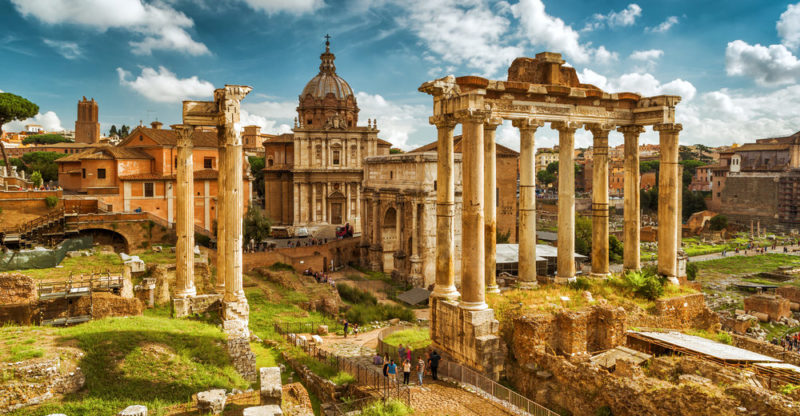
The last stage of the Classical Age focuses on the Empire that emerged as a result of the victories of Rome over Greece, Macedonia and Carthage. At the end of the 1st century BC. C. the Roman Empire became the dominant power of all the Mediterranean, North Africa, central and western Europe, and the Middle East .
In 117 the Empire reached its greatest territorial extension, thanks to its unstoppable army and the ambition of a long succession of autocratic dynasties, which came to divide and unify the empire on various occasions.
Roman culture inherited its imaginary and its cultural riches from Greece . However, they renamed gods and concepts in Latin, finding equivalences in their own tradition.
Thus, philosophy, the arts and thought continued their growth until the decline of the Empire, when the nascent Christianity imposed in its place the Semitic imaginary and monotheism as doctrine.
Politics of the classical era
The enormous journey of the classical period still serves as a reference to the dilemmas and political questions of the West. In this period , direct democracy was born, Roman law was founded , but the greatest empires in history also prevailed.
Throughout the period, the tensions between republic and monarchy , or between democracy and autocracy, were constant . During Classical Greece, in addition, great policy treatises were composed, such as Plato's Republic .
Classical Period Literature
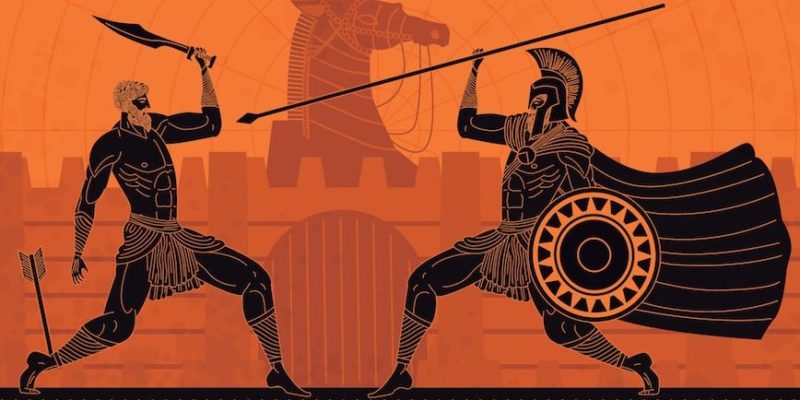
The foundations of Western literature originated at this time , especially in Ancient Greece. Its playwrights were inspired by ancient tradition and war stories (such as the Iliad and Homer's Odyssey , transmitted orally) to create a universal literature that is still consumed today.
Some of his works are still central to the culture of the West . Creators such as Aeschylus, Sophocles and Euripides stand out in tragedy , and Aristophanes in comedy. In addition, at this time the first text of literary criticism in history was composed , the Poetics of Aristotle, in which he analyzed the literary composition and its nature.
Classical art
The arts played an important role in the various kingdoms and empires of the classical period. They were the reflection of the greatness of their nations and the development of their peoples.
With literature and theater , especially they highlighted the architecture , with large temples and palaces ; the sculpture with anthropomorphic representations of gods, as well as statues of kings, emperors and conquerors; and music , to a lesser extent.
End of the classical era
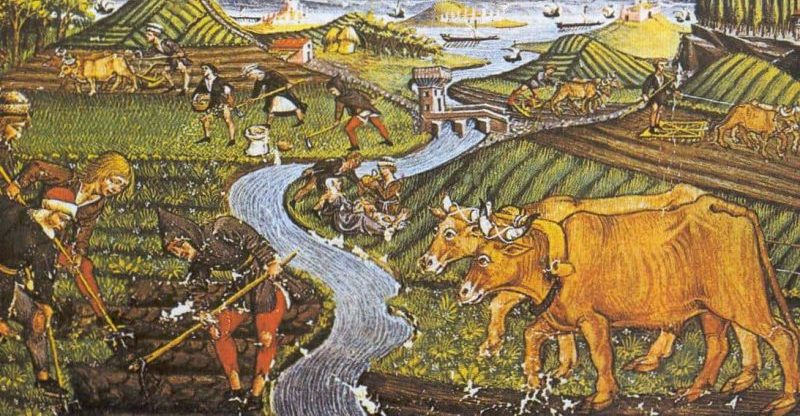
After the fall of the Western Roman Empire at the hands of barbarian looters and as a result of their own corruption , the dismemberment was rapid and chaotic. Different kingdoms were born that were in the hands of local landowners and that were taking different directions, despite sharing language and religion.
Thus arose the feudal society of the long Middle Ages (5th to 15th centuries) , ruled by aristocrats and by the clergy, who, as a result of Christianity, imposed the guidelines of their morality on all of Europe.
Classic era timeline
- 5th century BC C.
- Medical wars (Greece vs. Persia): 499-449 a. C.
- Peloponnesian War (Athens vs. Sparta): 431-404 BC
- 4th century a. C.
- Corinthian War (Sparta vs. Athens, Argos, Corinth, etc.): 395-387 BC
- Start of the Macedonian invasion: 346 BC. C.
- Death of Alexander the Great: 323 BC
- Macedonian division into three kingdoms from 301 BC. C.
- 3rd century BC C.
- Rome conquers the Samnites, Etruscans and Gauls between 280 and 275 BC. C.
- Punic wars begin in 264 BC. C.
- The Macedonian wars begin in 214 BC. C.
- 2nd century BC C.
- The Macedonian wars end in 148 BC. C.
- Punic wars end in 146 BC. C.
- Syrian Wars (192-188 BC), Rome conquers Asia Minor.
- 1st century a. C.
- The Roman Empire is created in 27 BC. C.
- Julio-Claudian dynasty (27 BC-AD 69)
- 1st century AD C.
- Flavian dynasty (69-96)
- Antonine dynasty (96-180)
- 2nd century AD C.
- The Roman Empire reaches its greatest territorial extension in the year 117
- Severe Dynasty (193-235)
- 3rd century AD C.
- Third Century Crisis (235-284)
- Division of the Roman Empire in two in the year 285
- Division of the Roman Empire into four (tetrarchy) in AD 293
- 4th century AD C.
- Officialization of Christianity as an imperial religion in the year 380
- Start of the barbarian invasions in 386.
- Final division of the Roman Empire into the West and East in 395.
- 5th century d. C.
- Barbarian invasion of the Western Roman Empire and dismemberment between 406 and 476.
The above content published at Collaborative Research Group is for informational and educational purposes only and has been developed by referring reliable sources and recommendations from experts. We do not have any contact with official entities nor do we intend to replace the information that they emit.
Veronica is a culture reporter at Collaborative Research Group, where she writes about food, fitness, weird stuff on the internet, and, well, just about anything else. She has also covered technology news and has a penchant for smartphone stories. .
Leave a reply
Your email address will not be published. Required fields are marked *Recent post

Sport: What Is It, Types, Risks, Features, Characteristics and Examples

Dogs: Emergence, Features, Characteristics, Feeding and Breeds

Story: Definition, Elements, Structure, Features and Characteristics

